Camden Public Art Trail
Camden
Telephone –
+61 2 9966 8867
Email –
studio@tilt-industrialdesign.com
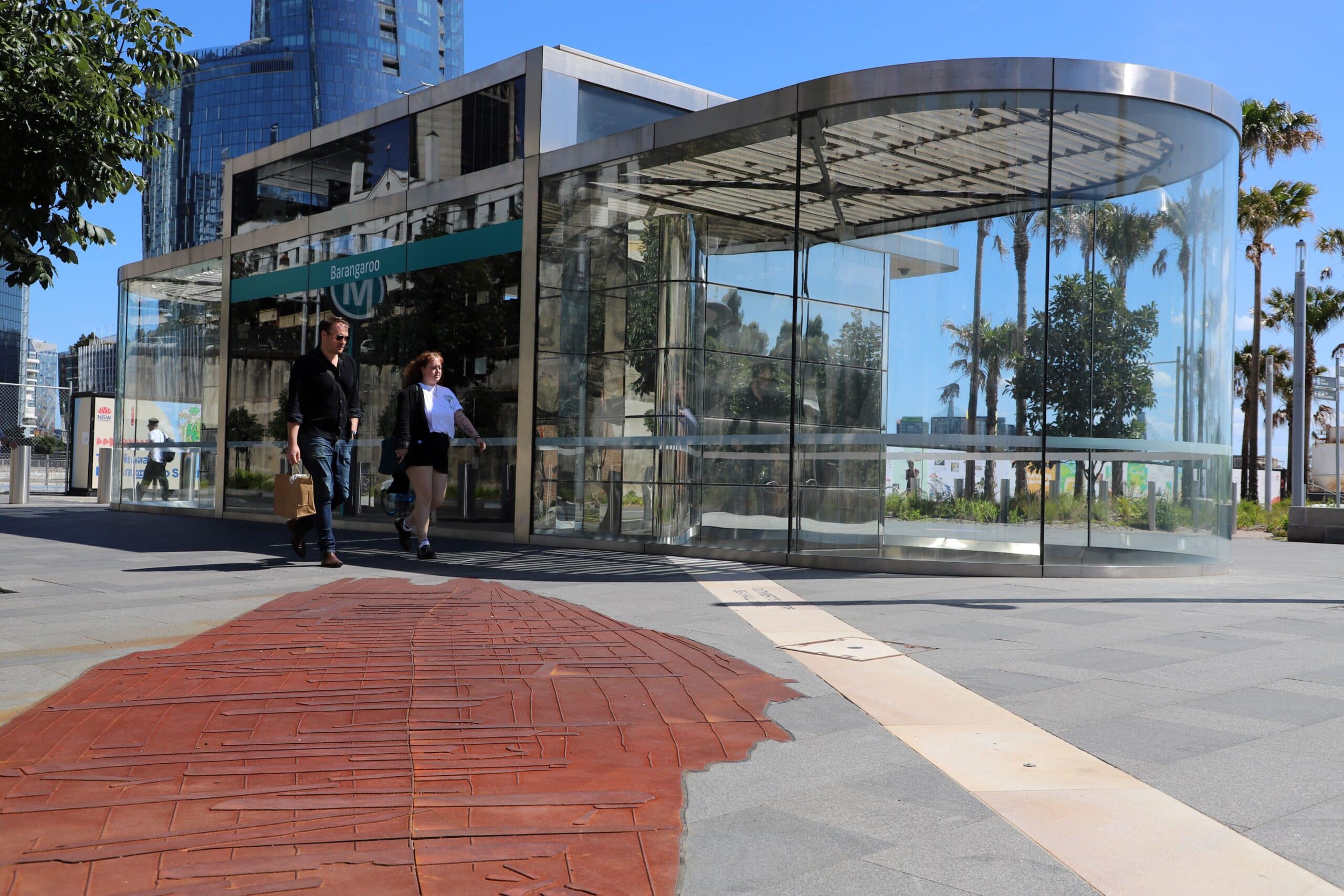
Barangaroo, Sydney
Heritage interpretation of a buried treasure
SYDNEY | GADIGAL
2024
Client: Sydney Metro
Partners: Transport for NSW, Heritage NSW, iNSW, Watpac, Arcadia Landscape Architecture, Artefact, Silentworld Foundation
Photography: Sydney Metro
6-Star Green Star Design and As Built rating
Unearthed by development at Sydney’s Barangaroo foreshore, the remains of a heritage boat tell the stories of the past and echo Sydney’s rich maritime history.
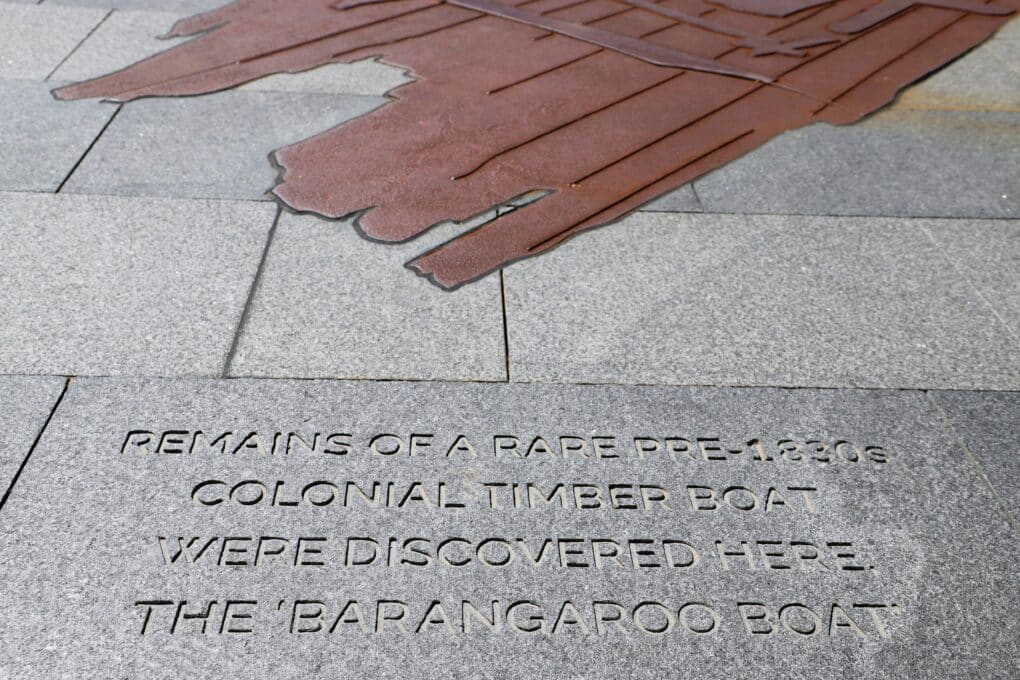
During archaeological investigations at Barangaroo, the wreck of a large wooden boat was uncovered in 2018. The state-significant find was revealed to be the oldest discovery of its kind in NSW and built locally from Sydney timber. It was likely abandoned on the foreshore and left to later become buried as Sydney’s foreshore developed with wharves, warehouses, and ship-building businesses.
The boat is clinker-built, a lighter, more agile style used for transporting goods across short distances. It also contained evidence of timber, rope, and leather.
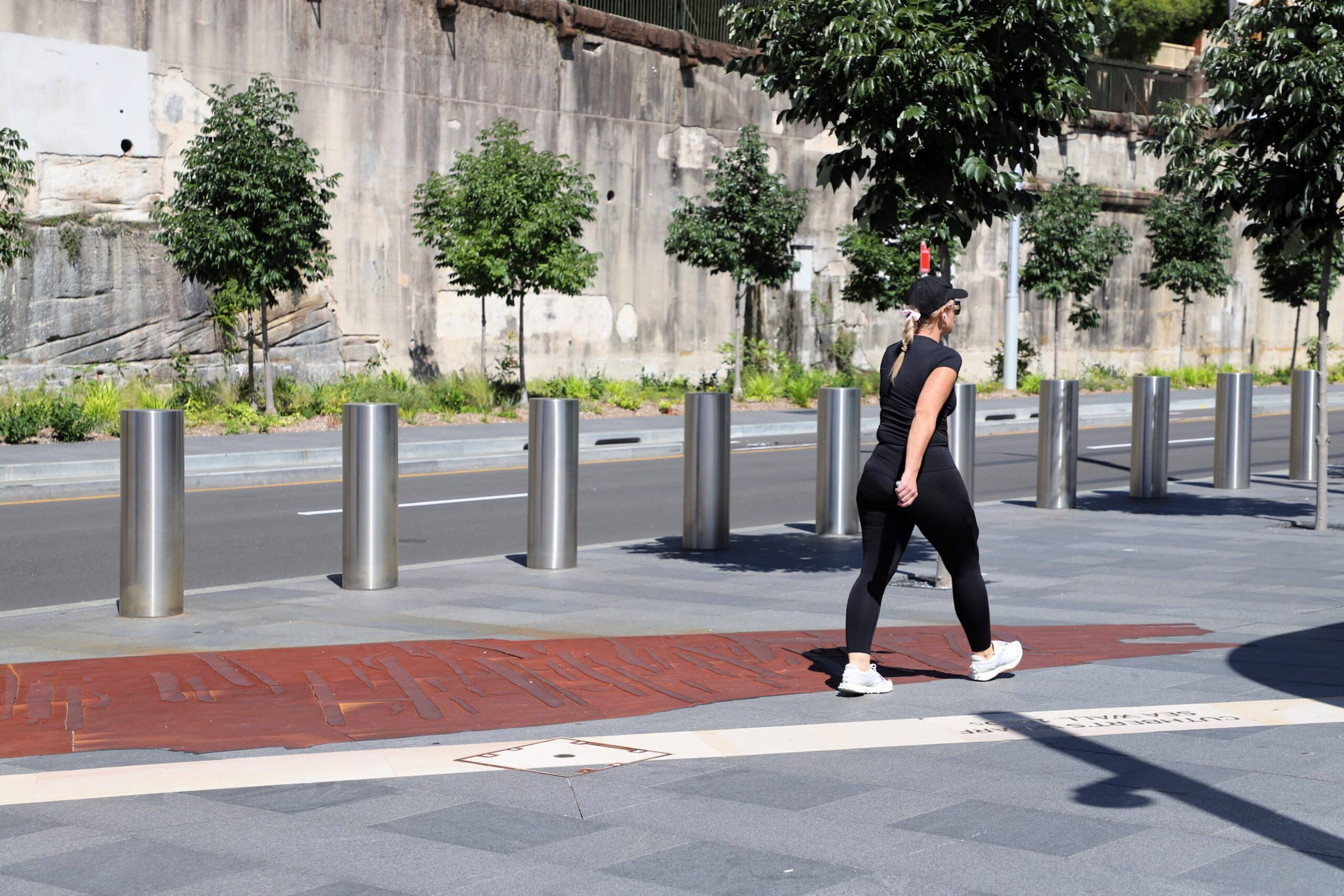
Tilt was engaged to design, procure, and install the interpretive inlay and etched paver, detailing the significance and history of the find. The boat’s location, shape and size were documented and transferred to a 3D photogrammetric image, which was used to create a cast iron inlay of the boat’s remains. The boat’s outline, 8 metres in length by 3 metres wide, was transferred to a flattened interpretive digital file, then cast in iron and sandblasted to create a textured wood effect.
The inlay was installed in the ground plane of the Barangaroo Station forecourt, at the East of Hickson Road. The inlay marks the boat’s position and links it to the surrounding heritage precinct of maritime buildings and wharves.
Tilt delivered:
This state-significant heritage discovery in 2018 uncovers the story of a pre-1830s ‘clinker’-style boat crafted from Sydney blue gum, stringybark, and spotted gum timbers. It would have been used to ferry goods around Sydney’s waterways.
A team of expert archaeologists uncovered the boat and meticulously extracted and catalogued each piece of the boat’s hull. Each piece of wood was cleaned, and then 3D scanned to create a digital programmetric model of the boat.
The pieces were placed in cold storage for 12 months to prevent degradation. The pieces were then soaked to remove traces of iron and plunged in a bath of polyethylene glycol wax to strengthen and preserve the wood. The full conservation process spanned six years.
Taking the 3D model, Tilt created a 2D flattened interpretive image of the boat, allowing the boat to be reproduced in cast iron sheets at the foundry. The pieces of the boat were then laid on a bed of sand at Tilt’s workshop to trace the exact outline and sequence of the pieces.
The outline of the boats shape was traced onto the pavers at Barangaroo and cut out to reveal the space that the iron panels would rest in. Using a magnetic gantry, the pieces were moved into place, creating a seamless fit. The surface was applied with two types of sand blasting to achieve a variety of surfaces. The patina of the iron will initially turn bright orange and then fade to a rusty brown in the years to come, providing a protective outer surface for the boat.
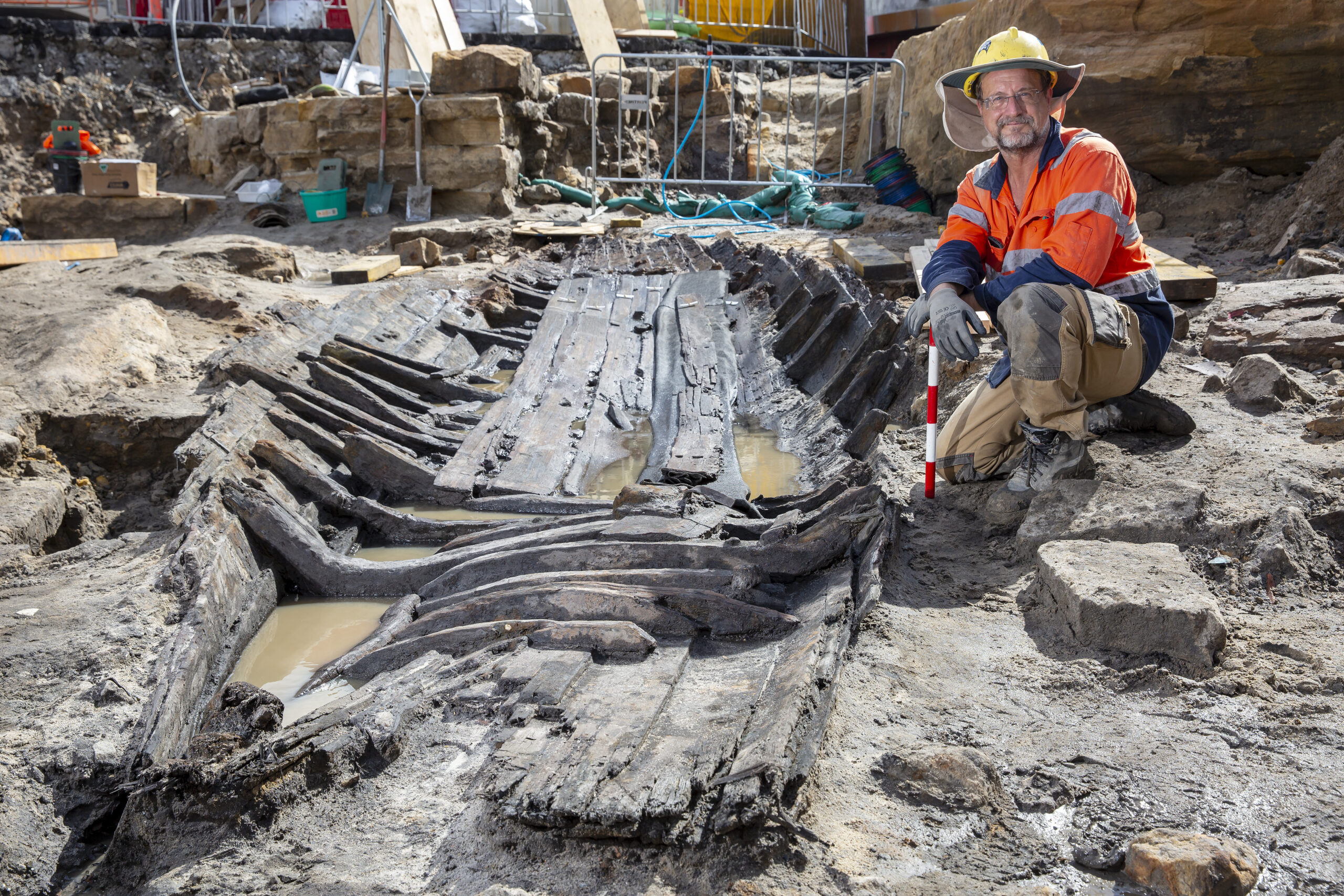
This interpretation of the historical Barangaroo precinct is a thoughtful and respectful treatment of a historically significant area. The collaborative project involved input from a wide range of consultants and experts to determine the best approach for preserving and sharing these valuable assets. The interpretation of the boat and other heritage elements from this precinct creates a visual narrative of Sydney’s past and provides an educational opportunity for visitors. The boat remains are permanently displayed at the Australian Maritime Museum, while the inlay will serve a historical legacy that will inform future generations.
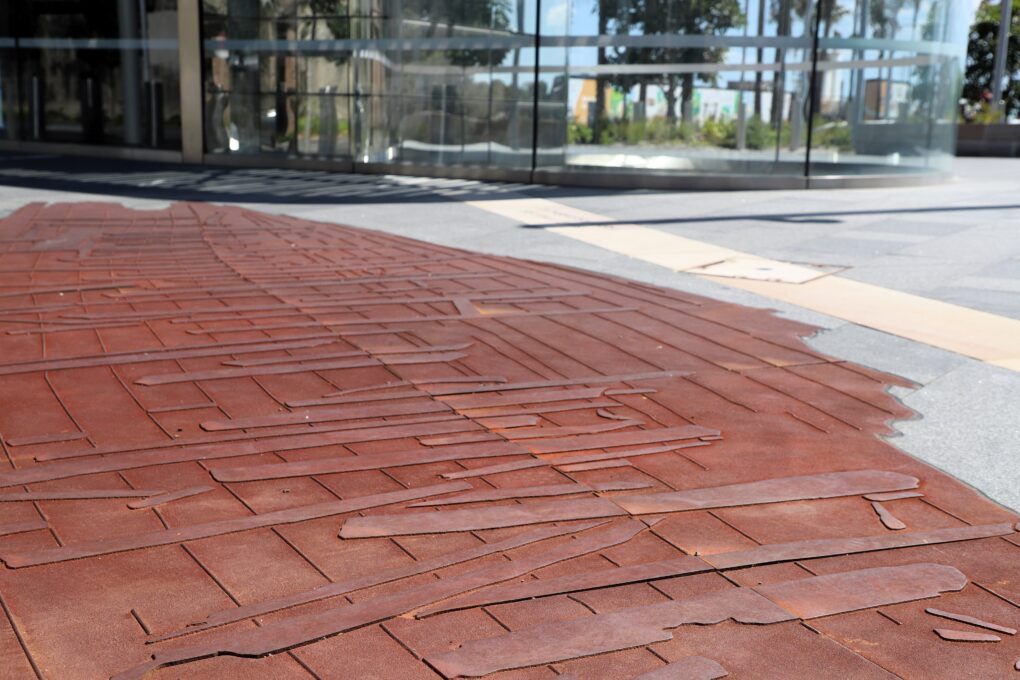
First look at Barangaroo’s newest waterfront precinct – 26 July 2024, Sydney Metro, media release
A brand new waterfront metro station is now open to the public in Sydney CBD – 29 July 2024, Timeout
AWARDS:
2025 National Trust (NSW) Heritage Awards 2025 – Objects Winner
Conservation of the Barangaroo Boat, Sydney Metro with Silentworld Foundation and York Archeological Trust
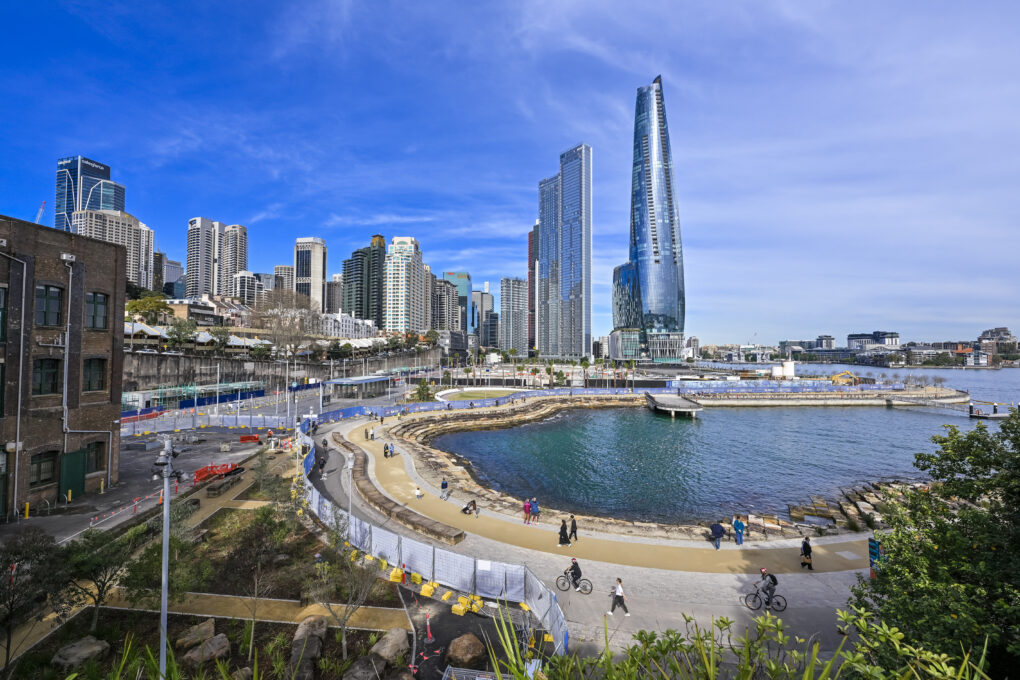
Explore more projects
New business — studio@tilt-industrialdesign.com
Careers — studio@tilt-industrialdesign.com
Press & media — marketing@tilt-industrialdesign.com
We acknowledge the Traditional Owners of Country throughout Australia and their continuing connection to land, waters and community. We celebrate the value and diversity of First Nations art forms, cultures and languages, and their ongoing significance today. We pay respect to Elders past and present.